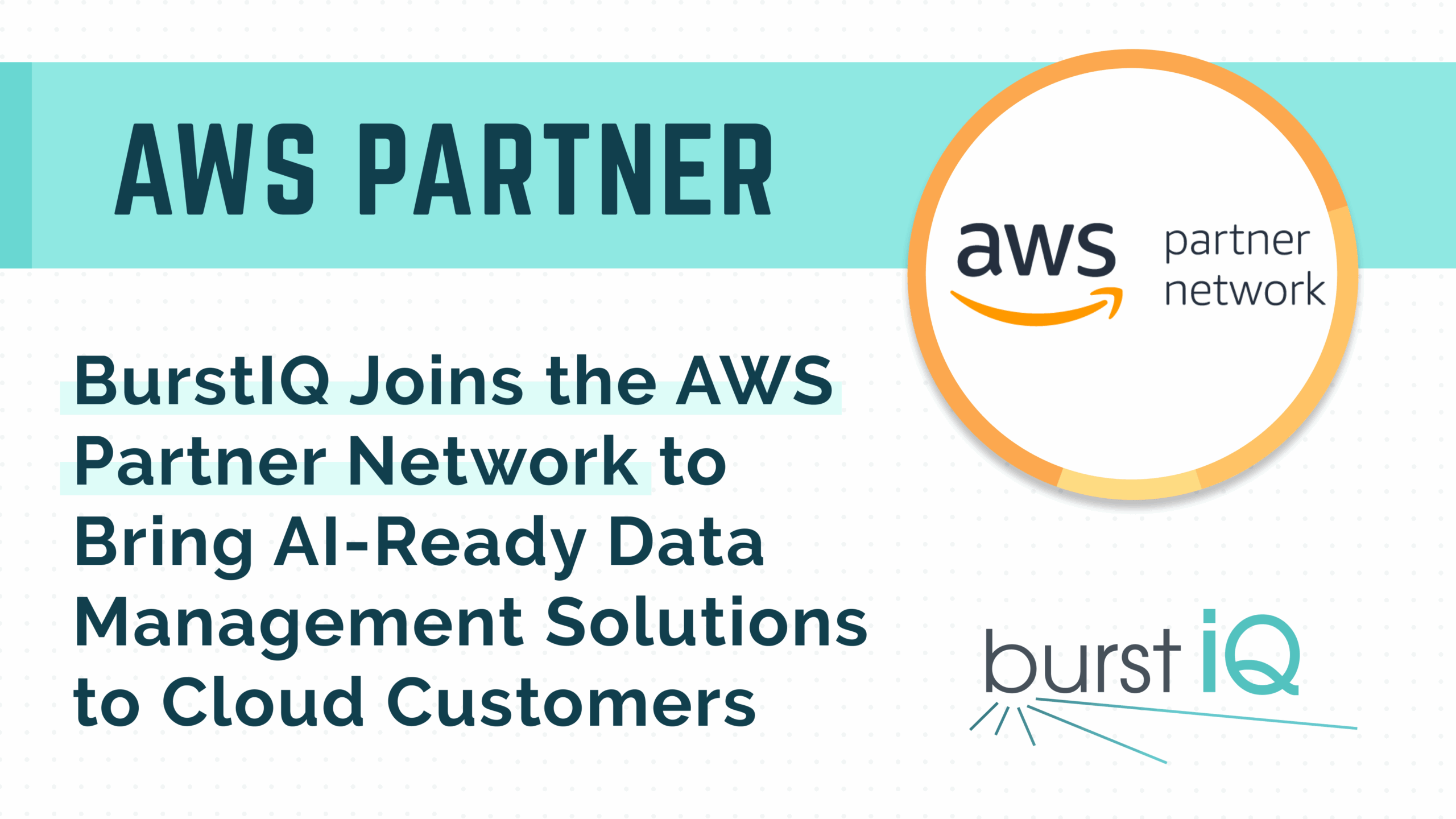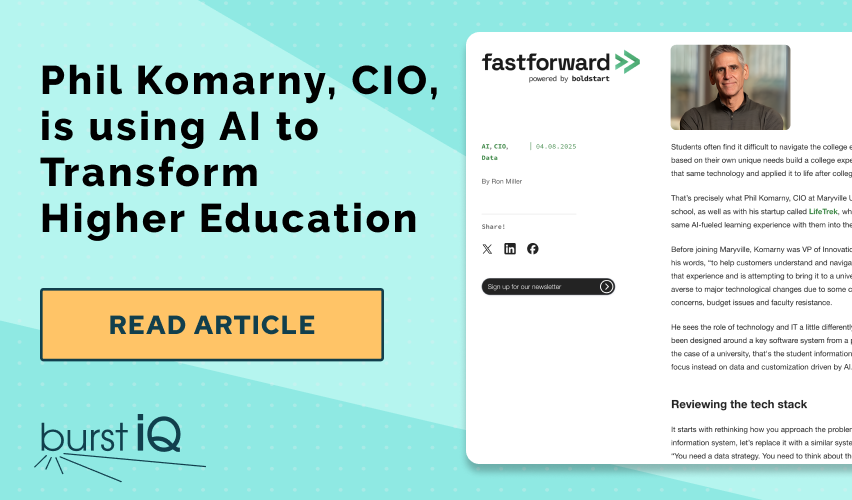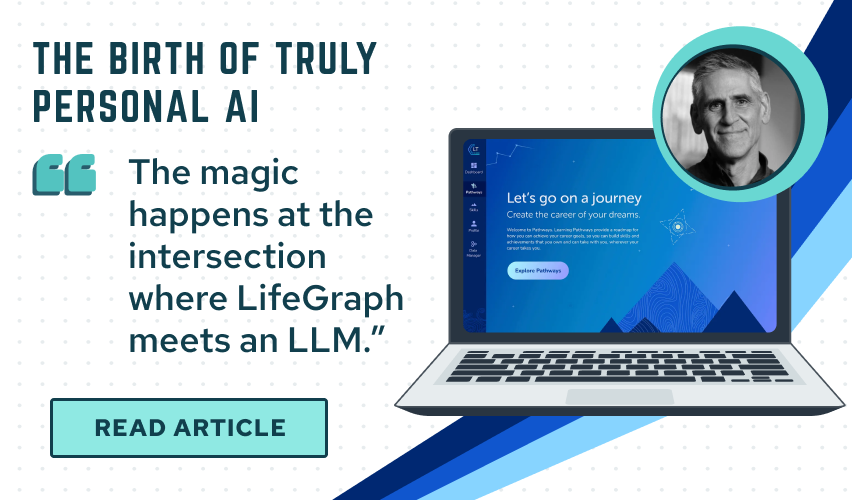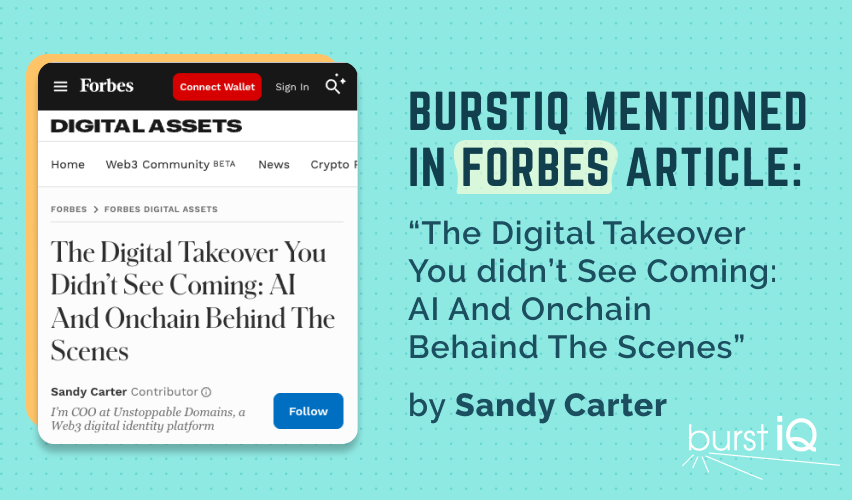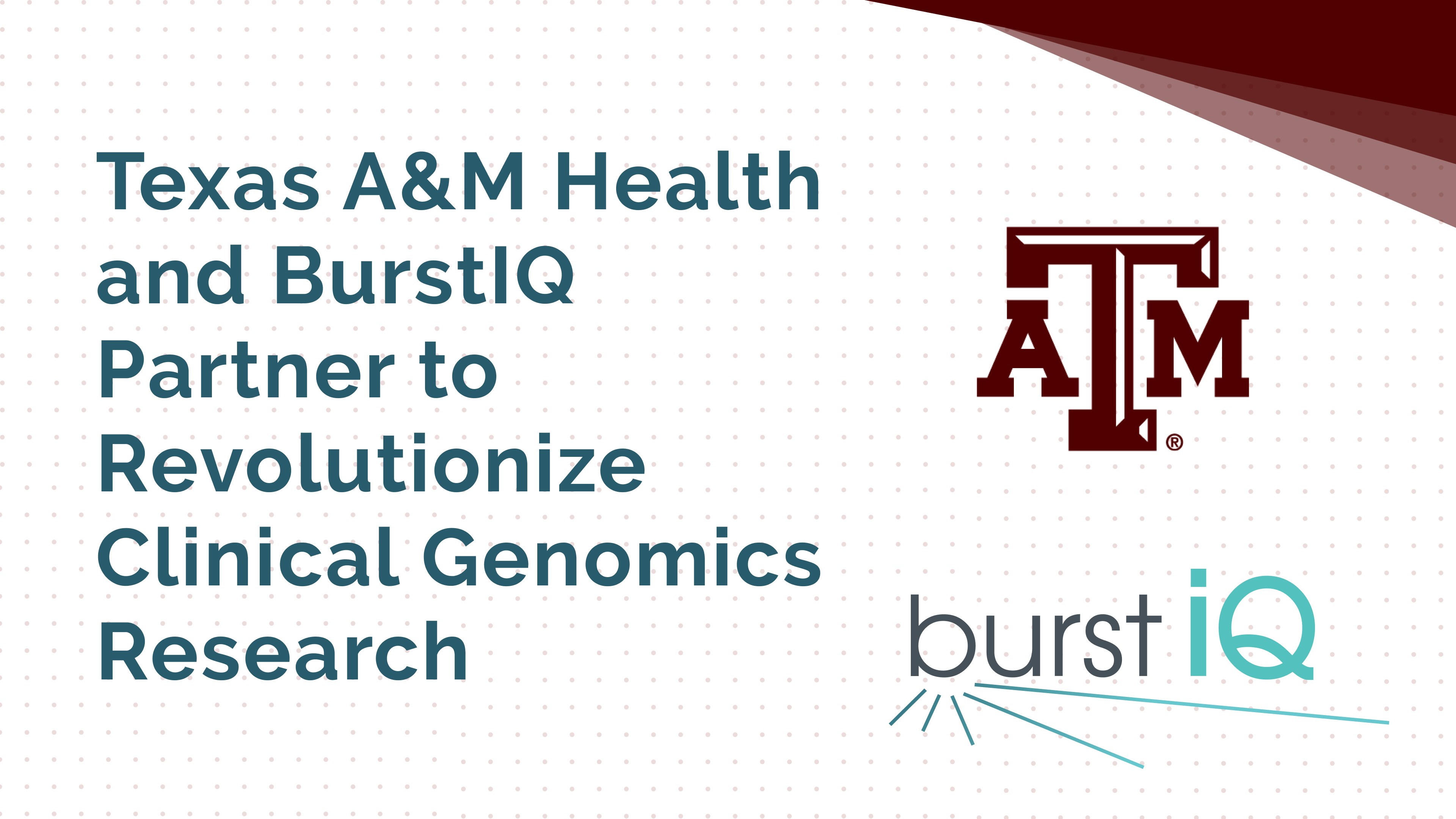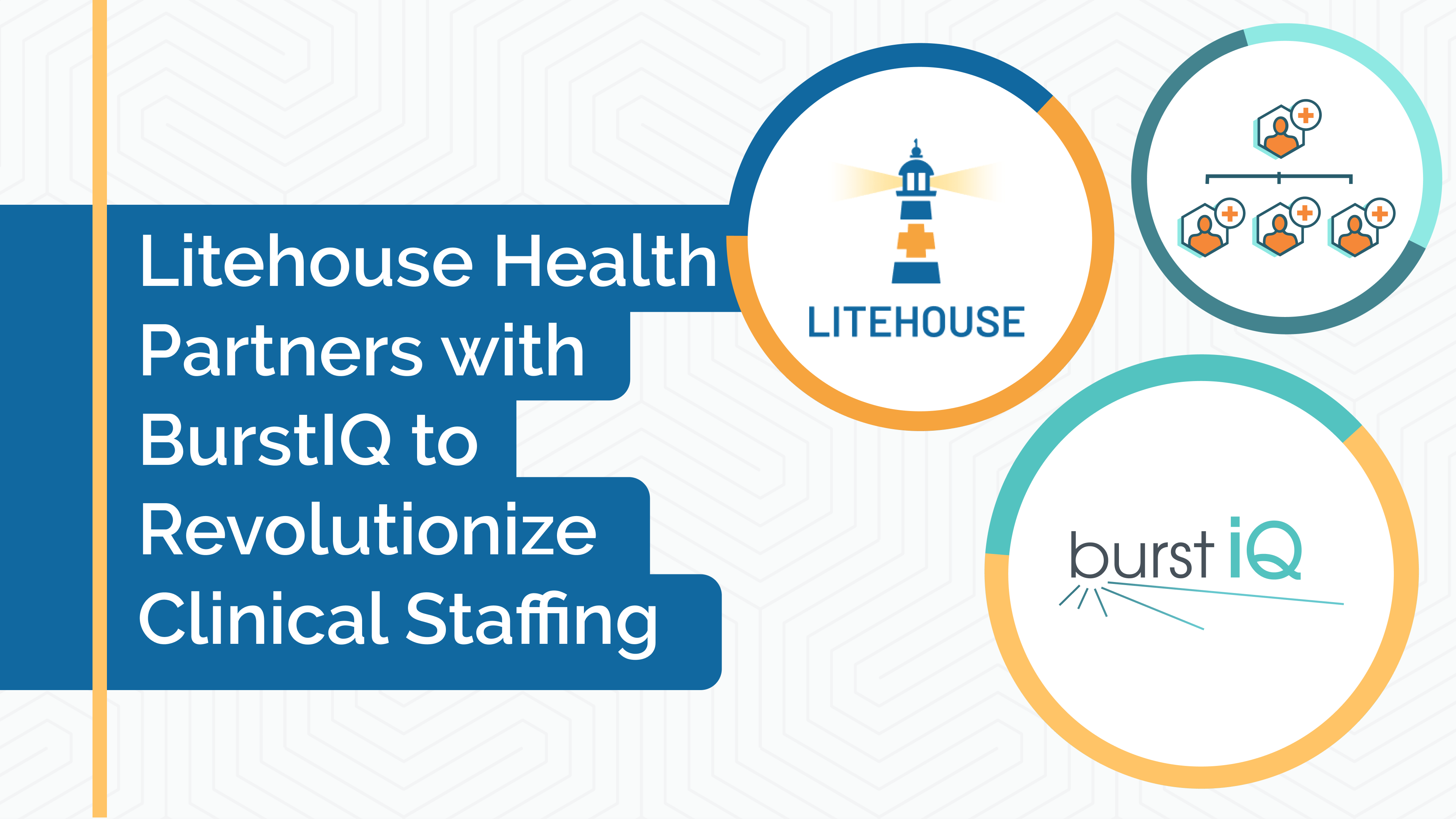BurstIQ: Cultivating Connections For The Next Generation Of Health
When we first interviewed BurstIQ, the company already had a solid reputation in the healthcare industry. They were the undisputed market leader with their enterprise-ready health data management solution, designed to simplify management of data ownership, consent, governance, compliance, connectivity, and intelligence. That early enterprise platform has now evolved into the global secure LifeGraph® Network. Despite the fact that the company serves the healthcare industry, which in 2020 saw more disruption than any other industry, the company was able to maintain a secure growth trajectory.
A Rapid Response to a Global Threat
The COVID-19 pandemic thrust unparalleled burdens on modern healthcare systems, yet industry stakeholders responded with resilience, rearranging priorities to accommodate needs for telemedicine, coordination of staff and bed capacity, and mass-scale testing and vaccine infrastructure. BurstIQ found themselves in a unique position. Healthcare providers and researchers were challenged with finding an efficient way to share patient data with each other, to establish treatments, and even cures. BurstIQ already had the HIPAA-compliant infrastructure needed to enable the sharing of patient-level COVID-19 data, so they built a collaborative research platform, called Research Foundry, that grew into a global community of over 200 researchers, doctors, developers, and enterprises ━all dedicated to building the next generation of healthcare.
Moving to the Edge
The tools that BurstIQ introduced with Research Foundry allowed the company to advance the enterprise SaaS platform into a full global network, the LifeGraph® Network. With LifeGraph Network, BurstIQ solves two of the most significant technology trends in the world: first, how to connect information across people, devices, solutions, and companies, and second, how to make all this data accessible to AI and other intelligence tools without restructuring it.
According to Business Insider, the number of mobile phones, wearables, and other connected devices is expected to exceed 40 billion by 2027, and advancements in chip technology means these IoT devices are now complex data processing machines that harvest, analyze, and share massive amounts of data. IoT devices capture data about movements and behavior patterns and enable patient control, supporting that the growth of IoT is shifting data to the edge.
Even regulations are moving to the edge. The General Data Protection Regulation (GDPR) and other similar regulations require companies to provide people with direct data ownership and control. Instead of connecting a few big systems and managing a few data access roles, organizations now need to connect millions of devices, applications, and users ━ each with different access rights. That’s exactly what LifeGraph Network does.
“LifeGraph Network uses a very different approach to data security and management. We combine several different technologies, including blockchain, machine intelligence, and advanced data security methods, to transform data into smart data.” -Tyson Henry, CTO of BurstIQ and the architect of LifeGraph® Network
Smart Data: Data with Trust and Context
Tyson Henry, CTO of BurstIQ and the architect of LifeGraph Network, gave us a glimpse into the technology behind the platform. “LifeGraph Network uses a very different approach to data security and management,” he says. “We combine several different technologies, including blockchain, machine intelligence, and advanced data security methods, to transform data into smart data.”
Smart data is data that carries with it all of context, access rights, and security that it needs to be trusted. Rather than controlling data security using role-based access, smart data carries security within each individual piece of data with embedded context. This context adds layers of meaning that traditional data models lack. Smart data enables a flexible, secure approach to connecting and managing data.
Building Smart Data into LifeGraphs
BurstIQ builds smart data into LifeGraphs: multi-dimensional and connected views of people, places, and things, and their relationships. “LifeGraphs are like kaleidoscopes,” says Mr. Henry. “You can use LifeGraph to personalize medication adherence plans, but then shift the focus to surgeries, using LifeGraph to optimize those experiences. It’s a useful way of deploying AI and intelligence because LifeGraph can identify relationships that can’t be found through conventional analytics.”
LifeGraph Network makes AI really powerful. With LifeGraph Network, deep intelligence is possible across any data, anywhere, even data you don’t own or control. You can connect global data to construct a unified view of a person, place, or thing, apply intelligence, and do all that while respecting its ownership and compliance requirements.
Enabling Multi-Sided Marketplaces & Data Exchanges
The last several years have seen significant growth of multi-sided marketplaces and what we commonly refer to as “the sharing economy.” Airbnb and Uber are prime examples. Multi-sided marketplaces are specialized data exchanges: producers and consumers must share information in order for the service to work.
In the healthcare and life sciences industries, multi-sided data exchanges take a slightly different form. Health information exchanges (HIEs), payer exchange consortiums, immunization registries, research networks, and benefit marketplaces are all examples of data exchanges. These industries manage health data exchanges using data warehouses and other models that centralize data ownership, control, and access management to a single entity. These centralized systems work well within a fixed network of endpoints, but the diversity of data, devices, endpoints, solutions, and regulations are growing. Business needs are changing at an accelerated rate and traditional data systems are reaching their functional limit.
LifeGraph Network simplifies how organizations create and manage large-scale data exchanges and multi-sided marketplaces. It does this by assembling all the tools to manage granular data ownership, governance, consent, sharing, and process automation. It allows companies to build exchanges that can automatically connect endpoints and grant data access. It allows the exchange to manage sharing from a single data point to petabyte-scale datasets, and from a single person to the whole world. This simplified approach to data exchanges makes it possible to construct adaptable systems.
Smart Data, Smart Experiences
BurstIQ also engages with solution providers in the health and life sciences industries. The shift towards the edge corresponds with growth of new solutions that are designed to bring health services directly to people. Telemedicine allows patients to connect remotely with providers, pharmaceutical companies use digital therapeutics to stay engaged with patients, and direct-to-consumer diagnostic products provide more information about personal health without direct physician involvement.
LifeGraph solves three key needs: customer trust, intelligence, and coordination. It enforces better data security, ownership, and control. This allows solution providers to prove that their products are trustworthy. It enables AI and machine intelligence to capture deeper context of relationships of people, places, and things. This enriches AI and other intelligence algorithms, so solutions are more personalized. And, it allows AI-enabled solutions to leverage any data, anywhere, without needing to consolidate and reformat it. This is critical to the development of next-generation health solutions, where data is more distributed and aggregation is near impossible. LifeGraph-enabled solutions can easily coordinate with other solutions to create more enriched experiences for their users.
A Bridge Between Exchanges and Experiences
As healthcare becomes more person-centric, the lines between data exchanges and solutions begin to blur. Users need solutions that help them live their healthiest life, and they need the means to discover those solutions. LifeGraph Network bridges the gap between solution providers, multi-sided data exchanges, people, and all the data shared between them. It empowers people to access the tools they need to control their health experience.
The Rising Tide
BurstIQ is currently working with partners to launch specialized LifeGraph Networks to address key market needs, with the goal of connecting organizations and aligning incentives around an intelligent and collaborative approach. “We set out to make the world a healthier place,” says Frank Ricotta, CEO of BurstIQ. “There’s an old saying, ‘a rising tide lifts all boats.’ That’s what collaboration does. Rather than benefiting just one company or person, collaboration lifts all boats. At BurstIQ, we’re not the boats; we’re the rising tide.”
